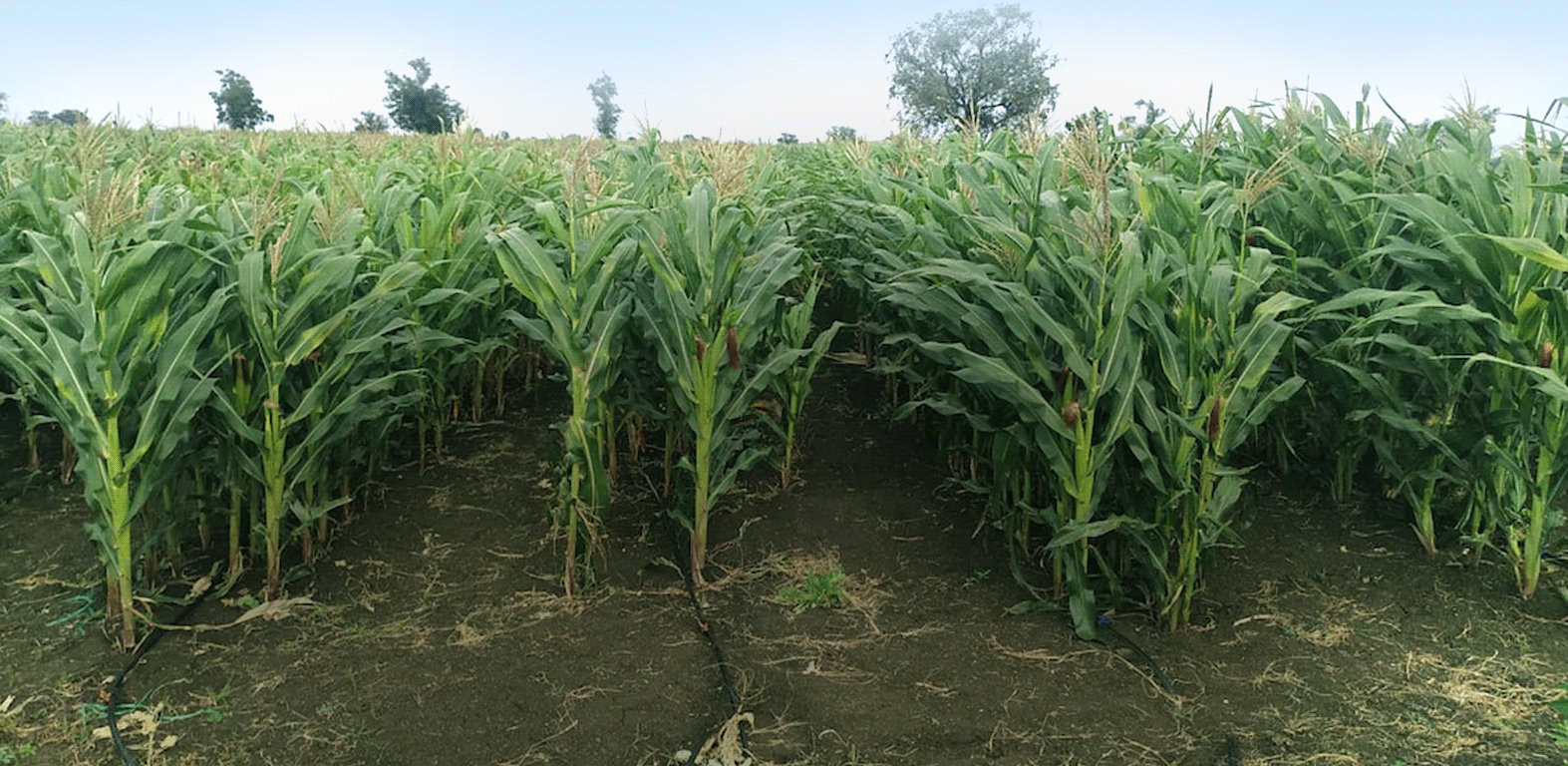Welcome to Jain Irrigation Systems Ltd.

Blog at Jains - HOW MUCH WATER DOES MY CROP NEED? Part 7. Maize
Maize is the miracle crop. It is the queen of cereals and has highest genetic yield potential. In India, Maize ranks fifth in area (8.55 m ha) fourth in production (21.3 m.t) and third in productivity (2.54 t/ha) among Cereals.
Maize has diverse uses; for human consumption (24%), as poultry feed (52%), as animal feed (11%), as raw material in many industries (11%), as seed (1%) and for brewery (1%).
Though maize can be grown in all the seasons because of the favourable climatic conditions, it is mainly grown as major Kharif crop in most States in India and Rabi crop in Andhra Pradesh and Tamil Nadu.
Maize is preferred over other cereals because it has less water requirement compared to rice, least pest and disease problems and high demand for its by– products and export potential.
Specialty corns like sweet corn, popcorn, baby corn and quality protein maize etc. also ensures additional income to the farmers and there lies a bright future for the value added products, which can ensure still high incomes to the farmers.
Water Need of Maize
Estimate of water use by the maize crop is becoming a necessity as the water availability is shrinking. Growers are also looking for opportunities to improve water productivity, by conserving water or reducing its consumption. At this point one started asking " How much water does my crop need? "
Where does all the water go after one irrigates a crop field? Water moves out of the field in 7 different ways after an irrigation that floods the field: 1.Direct evaporation from the water surface, 2. Drift of water away from the field due to wind, 3. Transpiration through the body of the crop plant (Mainly thru leaves), 4. Evaporation from the wet ground exposed to the atmosphere, 5. Run off of water from the field, 6. Infiltration to lower soil strata and 7. Deep percolation to far deep soil profile.
Among these, the essential components of crop water use are only two: transpiration and soil surface evaporation. Hence water use by crop is referred to as ETP, Evapotranspiration. As the crop grows the surface evaporation gets reduced and when the soil surface is fully covered by the canopy (leaf and leaf bearing branches of the crop) there is only one dominant component of crop water use: Transpiration.
In precision irrigation, the water given should only be equivalent to ETP. The goal of perfect irrigation is to reduce the second component of water loss, surface evaporation. In conventional irrigation major part of water loss are in fact the rest of the 7 listed above.
When a farmer asks the question, HOW MUCH WATER DOES MY CROP NEED? The answer is the ETP (evaporation plus transpiration). Accordingly I have estimated the water required for a good high productive wheat crop. The difference among the regions is due to difference in evaporation rate during the growing season of the crop.
How Much water I need for Maize crop?
| Table. Water requirement under drip irrigation – Maize | ||
| WR mm |
WR m3/ha |
|
| North India Plains ( North Punjab– June 15 Planting –Kharif season) | 364.22 | 3642.2 |
| Central India dry region ( Bagalkot, Karnataka – September 25 planting –Rabi season) | 395.95 | 3959.5 |
| Central India dry region ( Khammam, Telungana – June 15 planting – Kharif season) | 434.24 | 4342.4 |
| Eastern Coastal region (West Godavari, Andhra Pradesh– September 15 planting–Rabi season) | 397.4 | 3973.5 |
Precision Irrigation in Maize is maintained by drip method of irrigation. In conventional method water is applied till the field/or field channels are filled up. In many fields in Haryana, Punjab and one can see maize crop in flood water due to excess irrigation water. A major portion of this applied water moves away from the field.
For a growth115 days period, Maize requires only 3642 m3 to 4342 m3 water per hectare to produce 10.0 to 12 t/ha yield under drip –fertigation assisted precision farming. Applying water as per the estimates above is possible only through drip method of irrigation. In conventional irrigation system the whole season (115–120 days) consumes 5000–6000 m3 on an average considering the way farmers apply irrigation water and the productivity of ranged from 7– 8.5 t/ha.


